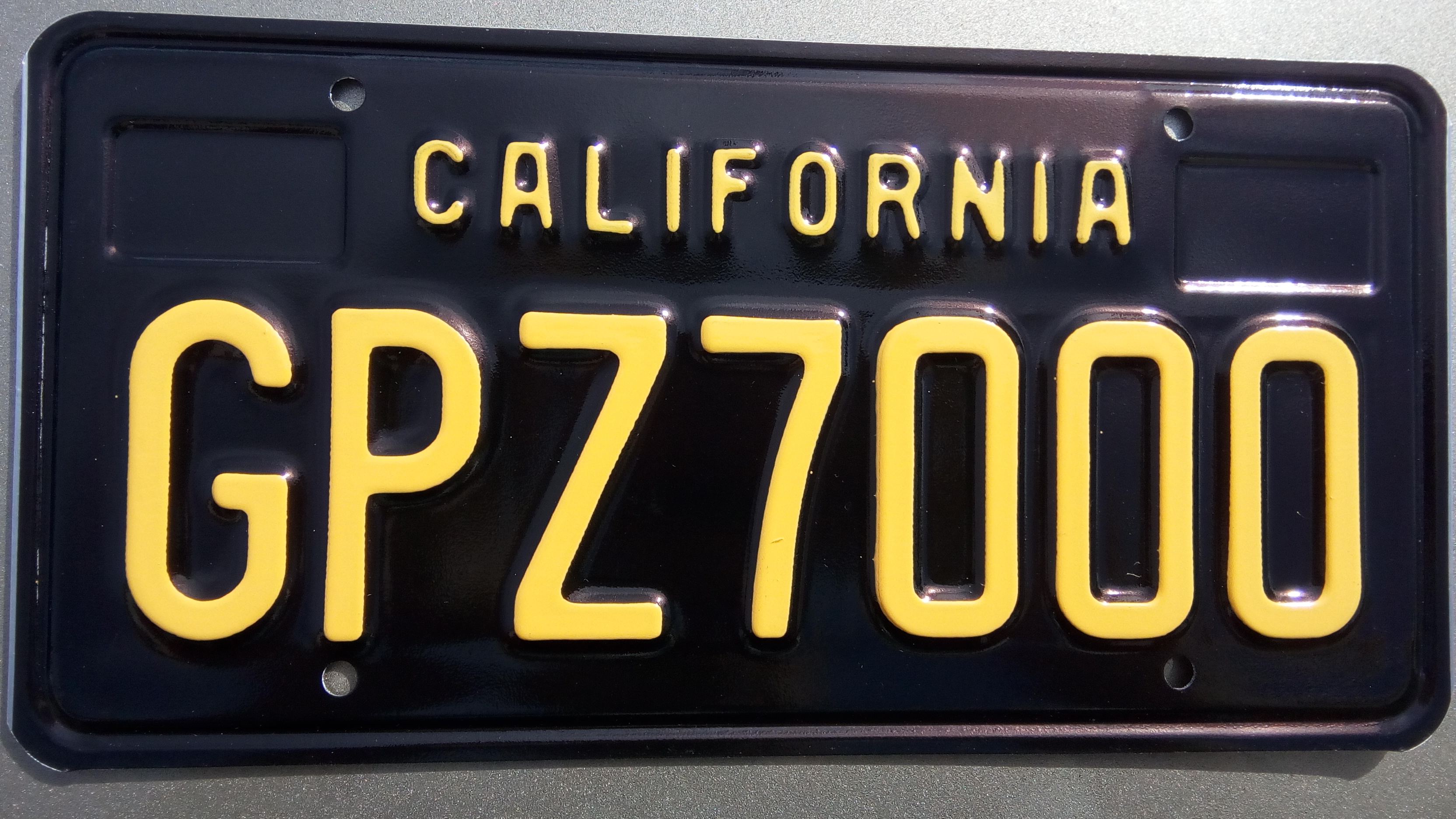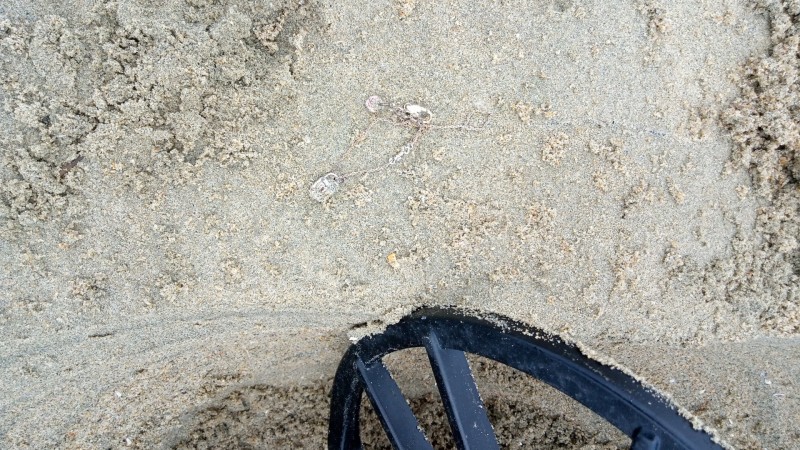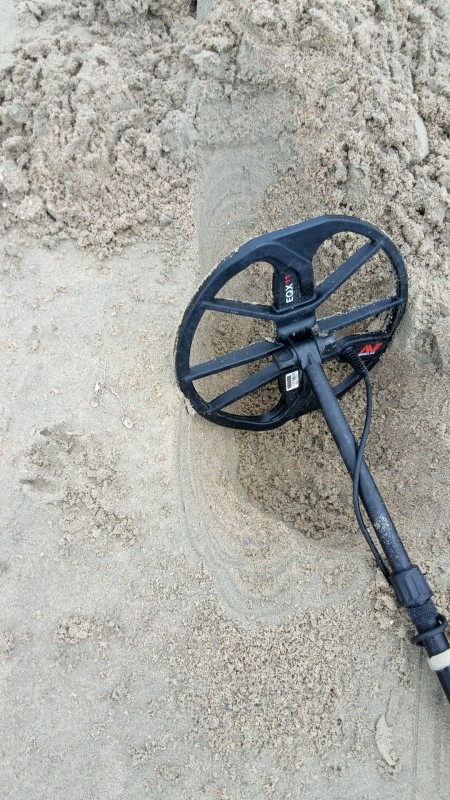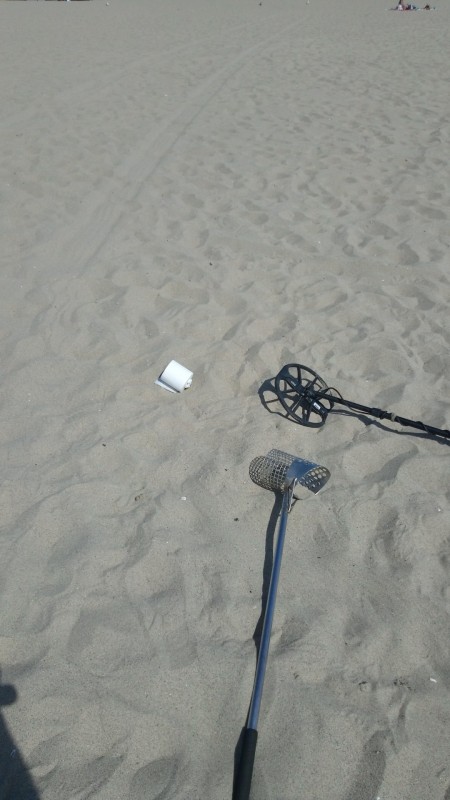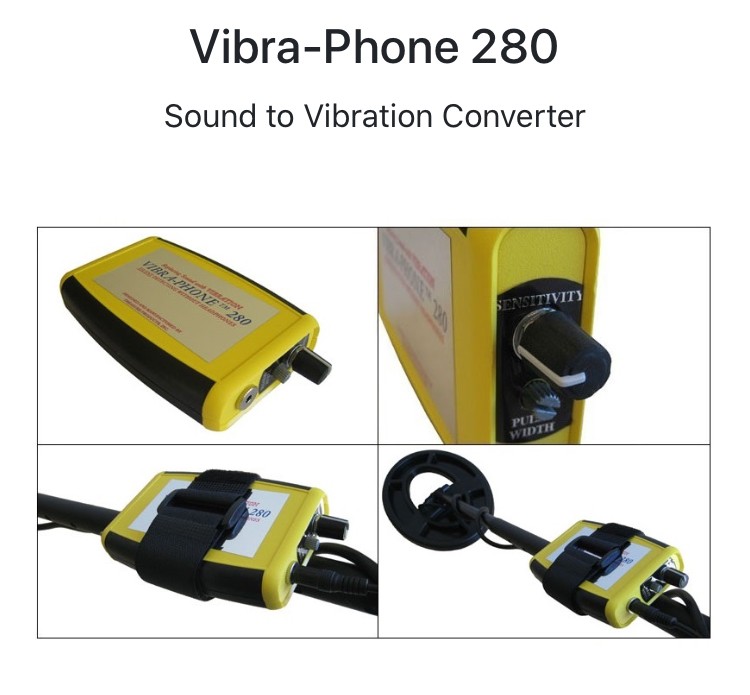-
Posts
5,375 -
Joined
-
Last visited
Content Type
Forums
Detector Prospector Home
Detector Database
Downloads
Everything posted by mn90403
-

Ucla Meteorite Lecture Via Zoom Sunday June 14th
mn90403 replied to mn90403's topic in Metal Detecting For Meteorites
The lecture is this Sunday. Also, if you want to see how to identify a meteorite go to the website. https://meteorites.ucla.edu/ The next lecture is here: UCLA Meteorite Gallery Lecture Series The Meteorite Gallery is temporarily closed to the public until further notice. Title: "Spherules in Sediment Deposits from Asteroid Impact Ejecta" Lecturer: Dr. Frank Kyte, UCLA Cosmochemist. When: 2:30 p.m. on Sunday, 14 June 2020. Registration: https://ucla.zoom.us/meeting/register/tJ0ud-yppzkpH9zTgL43K75yP73wYub-w6ET This talk will discuss formation of impact spherules and their occurrence in impact deposits ranging in age from 0.8 Ma (million years before present) to 3400 Ma. When asteroids impact the Earth with cosmic velocities (about 20 km/sec) they release enormous amounts of kinetic energy. A large portion of this energy is transferred to the Earth's surface that results in seismic waves and excavation of a crater many times the asteroid's volume. Materials ejected from this crater are deposited mostly near the crater, but in large impacts the ejecta with the highest velocity can travel above the atmosphere and return as a global deposit. The famous dinosaur-killing impact at the K/Pg (a.k.a. KT) boundary produced a global deposit that was probably only a few mm thick. It is well known that this K/Pg layer has lots of iridium from the asteroid but its most distinctive characteristic on a macro level is that it is composed mainly of small spherical particles known as impact spherules. Impact spherules are a common feature of distal impact deposits (those deposited far from the impact site). Large impacts can melt significant amounts of crustal rocks in the impact crater, producing spherules around the crater. The highest velocity ejecta likely comes from a supercritical* "ejecta plume" composed of a mixture of crustal and asteroidal materials. As this ejecta plume expands, melt droplets will form, some condensing from a vapor, and these will solidify to form the silicate spherules common in impact deposits. *supercritical link Advance notice of the next lecture Title: "DART (Double Asteroid Redirection Test): A Telescope Observer's Perspective" Lecturer: Dr. Cristina Thomas, Northern Arizona University. When: 2:30 p.m. on Sunday, 12 July 2020. Registration: https://ucla.zoom.us/meeting/register/tJwrde2vrz4tHtOUYDnw4xEBFtQrG6634bmy DART is NASA's first planetary defense mission, which will test asteroid deflection by kinetic impactor. The spacecraft will impact the satellite of the binary near-Earth asteroid (65803) Didymos in fall 2022. I lead the DART team responsible for observing and understanding the orbit of the moon prior to and after impact. The observed orbit change will be how the team determines the effectiveness of the experiment. We understand the orbit of the binary asteroid system using light curves, a measure of how the brightness of an object changes over time. When Didymos is close to Earth, the moon and the primary eclipse each other from the vantage point of our telescopes on the ground. Each eclipsing event causes a subtle dimming of the lightcurve known as a "mutual event". Observing these events enables us to observe the path of the satellite around the primary and predict the next mutual events. We observed the Didymos system in 2019 and have additional pre-impact observations planned for later in 2020 and early 2021. These observations will establish the state of the system before impact. We will perform similar observations in the period following the fall 2022 impact to determine the change in the satellite orbit. I will discuss how we understand the orbit of the satellite, results from our recent observations, and our future plans for observing the Didymos system. Technical Support Upon registration you should receive a confirmation email with login details (please check your Spam folder). If you need further instructions on how to join a meeting via Zoom click here or contact our Meteorite Manager, Natalia Campos, at ncampos@ucla.edu. This email will be especially monitored after 2 pm on Sunday. Admission Free and open to the public. Contact Email: meteorites@ucla.edu -

As I Was Exiting The Beach In The Dry Sand ...
mn90403 replied to mn90403's topic in Metal Detecting For Coins & Relics
On this beach I often start digging negative 'fringe' numbers and they sometimes turn into good, deep targets. I dug some of these pennies and trash at 12+ inches. When I find the larger 'trash' objects then I slow down because a good heavy target could be near. We like digging old tarnished quarters here. It means a deep layer has been moved by wave energy and spit those quarters up on the slope. Rings can be mixed with these. -

As I Was Exiting The Beach In The Dry Sand ...
mn90403 replied to mn90403's topic in Metal Detecting For Coins & Relics
I have it on 0 for both and I don't know which one it goes to when I check that setting. The next time I use it I'll see if it is on FE or FE2. The screws come in scratchy as well as the two 'foreign' coins on each side of the fake. I turn up the volume on T1. If this was like the 'spot' where midalake hunts then I'd be getting more gold. Mitchel -
Have you ever had a dig and you look down and you say 'Oh MY?' I got this hit as I was leaving the beach not too far from where I 'found' the toilet paper. It turns out that the toilet paper is worth more than this coin! haha Why? When I got the number on the 800 it was 18. I was just about to finish my 3 hour session with a penny I thought. When I saw the edge of a large silver coin in the sand I said this is odd. It doesn't match. When I got it in the scoop it was not heavy enough to be real. I could see a couple of spots on the edge without my glasses and knew it had to be fake. When I got home I saw the sandwich line. You can see other fake things about it too but it is probably not counterfeit because it doesn't say United States of America on it. There were a lot of targets and any one of the washers could have been a ring. I dug a lot of holes.
-

What Is Your Favorite Gold Detector And Why?
mn90403 replied to Gerry in Idaho's topic in Detector Prospector Forum
Gerry, Just like many others my response to my favorite detector is split. In my case it is split between a GPX 5000 with various coils that has found my most weight and biggest nuggets and the GPZ which has found the most nuggets. I still haven't found a 1/2 ounce nugget with the GPZ. Mitchel -
Tom, Good hunting and I know when you get out now you cherish your time. I certainly do. I'm in your world and in the retirement home world at the same time. It's been months since I've been on a nugget hunt not because of the lock down but because I'm mostly in charge of our 2.5 year old. I love the smell of wet diapers in the morning. haha I get to sneak out in the middle of the night or a couple of hours on an afternoon for a beach hunt with the 800. I'm looking forward to the years coming up where I'll be out with my son and help him find his first nugget. I hope he does it before he is 5 and it may be with an 800 because I don't think he will be able to handle the weight of a discriminating ZVT. Mitchel
-
My wife said to me 'If you don't know who found it and you don't have a picture of it, how do you know it was ever there?' Fenn says he was sent a picture of the find but doesn't know who found it. There has to be a better ending than this.
-
I don't know anyone that knows for sure. We're saying the same thing backwards. The only thing that I 'skip' is when I am in a patch that includes pennies (solid 20) and I will move on to another target because I have a sore back. I've been fooled a few times on pennies but I'll save my holes for a better target sometimes. When I say 20, that does not mean 18 and it does not mean 22. I don't use a slotted accept/reject as it is a judgment call for that hunt. My general moto is dig everything so I can see the size, shape, weight and depth of my beach finds. The few parks that I have dug drive me crazy because of the digging itself. A couple of recent stops were without a pointer and that is a real pain. I know I would skip more in parks but it wouldn't be numbers between 3 and 12.
-
Ok, if they show it is found please delete or just put my post on that thread.
-
https://www.kob.com/albuquerque-news/forrest-fenns-treasure-reportedly-found/5753216/?cat=500
-
Steve is on it again. I call the sound scratchy on the Equinox except for a couple of them that were balled up. It is one of the reason why I dig negative numbers and bobby pins. The chains sometimes start as iffys if you can find them at all. I think the best chain that we have between my wife and I she found with the SE Pro. I had just been over that same area with my 3030 and it didn't have a solid enough sound for me. She dug it and it is a 20" 18k with cross and weighs .6 ounces. My best chain (18 in/14k/herringbone) with the equinox was a wet wave find. It was in the little waves being moved around. The clasp was not broken. It was not heavy enough to be 'grounded' on a surface area vs weight basis. These are they types of chains that people wear into the ocean to swim around here. The athletic bling is lost on those fields. You might have to think of things in an opposite way like Steve said. If you know for certain you have a trash signal then don't dig it so you can dig other better targets. Dig everything that you know is not trash.
-
-
WTG Norm but ... I thought you had found a nugget. I guess the ring will just have to do. Mitchel
-
Last weekend I was looking at some of the posts that Skullgolddiver was putting up and he looked at a cross I had found and I posted a couple of pictures of the beach. A little later in the day I got a personal message that was like a treasure map. It said go to a particular beach on June 2 because the wind and conditions were right for detecting. I've never had anyone give me such advice before so I wanted to take advantage of Skull's advice. I took off at the appointed time and hit a beach I'd never detected before that was a bit north of where I had found my cross. It is not an easy beach to park at if you don't want to pay parking but I did find a place and I got down to the beach during low tide. It turns out to be a dog beach where all dogs can run free. The poop is really not a problem and one of the admonitions is that you should be able to see your dog at all times! haha The beach was very flat. The women were not. I walked a couple of miles to the north trying to find a patch as I didn't have much time. I went into the water to knee deep and up to the top of the previous high tide. There just wasn't much there. On the way back almost where I had entered the beach I got a good number. It was a 12 and I dug it. As you can see it has a fine little chain but it is not silver. I looked around and one of the women with a dog was looking at me so I decided to show her what I had found. I said 'You aren't really going to believe this but the reason I am here is that a guy from Italy sent me.' I then said it was as the result of a metal detecting forum. She told me it should be a great beach for finding stuff because people run all over that beach throwing stuff for their dogs and they may lose more than what I had already found. She was a treasure too. It was time for me to head back to where I had found the lone cross from the previous trip and alas there was nothing in that location either. I gave up on wet sand and found one cheap ring in the dry sand before I called it at the end of 4 hours. Thank you Skullgolddiver for an excuse to get out and hunt another beach. It was an adventure. Mitchel
-
I know we are coming out of our lock downs and this is may not be quite as valuable as it was a month or so ago but ... what a find! I've seen some of the videos where each sheet was carefully used to pay for services and goods. I didn't stage this but I also didn't put it in my finds bag. haha
-

Surgery Operation On TDI Bh Question.....
mn90403 replied to Skull diver's topic in White's Metal Detectors
I've spoken with the owner of Treasure Products years ago. I have one of the vibraprobes and I also bought one of the pointers. The pointer seems to need more proximity than I would like so I don't use it. I think one of those handheld detectors with some power would be 'fun' but the coil is small and it may not be as effective as needed. I wish someone that uses one would give a review. -
I just looked on the site and there is a different design of the vibraprobe! https://www.treasureproducts.com/vibraphone.html
-

Surgery Operation On TDI Bh Question.....
mn90403 replied to Skull diver's topic in White's Metal Detectors
All of this 'talk' about diving products, don't forget this thread! -
Congratulations. That is a pretty good day when you can get three rings.
-
Chase, That is a great starter for everyone. You could just copy and paste that answer for anyone who first uses an 800. It is really that simple folks on the settings. Chase or I or Steve could turn on an 800 do what Chase just told you to do and hand it to anyone and say 'go find stuff' and you don't need to adjust it. The learning curve is sound which simply put is a new language. Mitchel
-
I had to replace my 800 because of a faulty off/on switch. You can, and probably 'should' just turn it on and use it as it came from the factory for the first few trips. Just follow the getting started routine and don't read any of the advanced threads. Many of us have returned to near basic settings after we own them a while anyway. Mitchel
-
Where is the thread about this probe?
-

Boom! First Silver! 1853 Seated Liberty Half Dollar
mn90403 replied to CmonNow's topic in Metal Detecting For Coins & Relics
Congratulations Well done. A great coin is good to find. They are my weakness as I hunt few areas that have anything other than clad. You described the area of the find well. It is like finding gold nuggets under the bushes or in other hard to get to spots. Mitchel -

Ben's Seen Better Days--updated
mn90403 replied to Againstmywill's topic in Metal Detecting For Coins & Relics
I was re-reading my silver cleaning formulas again yesterday and they added a new one on cleaning I had not see before. After you have cleaned this real dirty one with the aluminum foil method of choice let it soak in ketchup! I'm doing that with the watch band I found. Seems to help with some of the color.

